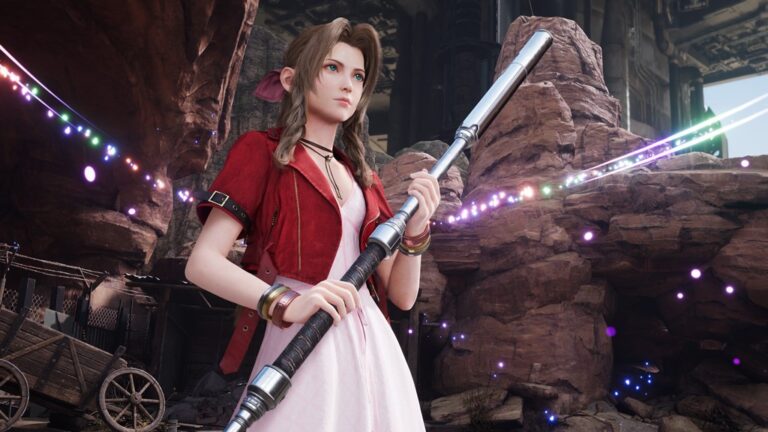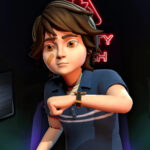There’s a lot in the world of Final Fantasy. I mean a lot. There are a total of 13 mainstream non-MMO games and a ton of spinoffs like the Crystal Chronicles, Tactics, etc. I’ve recently gone on a binge of replaying some of the older titles and it’s made me go huh – how would you even get started in the series.
If you started for instance at FF8, it would be so confusing. I wouldn’t think much of the series. I started with FF1 and FF3 (US) and skipped until 10, 12, and then went back to 7 and 8 which made them all make a lot more sense than if I just started with 7 or 8.
So I’ve put together my thoughts on the best order to play and various issues with some of the games. These are my opinions and are not universally shared. For some, any one of the Final Fantasy games are their ABSOLUTE favorite. For some, most of the games are bad. It’s going to be up to you to play them and find out where you personally stand.
If you’re playing any title, try to find the modern versions that have quality of life features like built in cheats, no encounters and fast forwarding. Most of the PC and Switch versions include these.
Let’s break it down into consoles:
| NA Mainstream Console | FF US Versions |
|---|---|
| NES | FF1 |
| SNES | FF2, FF3 |
| Playstation | FF7, FF8, FF9 |
| Playstation 2 | FF 10, FF 12 |
| Playstation 3 | FF 13 |
| Playstation 4 | FF 15 |
For this article, FF3 will mean FF6J to save confusion. We’ll add J to the end to denote the Japanese numbers.
Overarching Stories
Final Fantasy 1: There is almost no story. It’s an NES game, that plays like a dungeon and dragons game on the NES. It’s actually fantastic even in the modern era due to the strategic use of various spells and the total lack of much depth in the original NES version.
Final Fantasy 2: It’s about a dark knight named Cecil trying stop a sorcerer from obtaining crystals. The story goes from Earth to the Moon.
Final Fantasy 3: An empire in a steampunk world is combining magic with technology and an evil clown basically wants unlimited power. A lot of depth in the story, told through the text box as you play through essentially two versions of the same world. Huge playable cast.
Final Fantasy 7: Bio-terrorists want to stop the exploitation of the life-stream, the power of the planet, against an evil mega corporation that’s totally fine experimenting on Humans.

Final Fantasy 8: A school and it’s students and teachers band together to fight against an evil sorceress.
Final Fantasy 9: A vagabond helps a princess rebel against her mother and an empire creating an army of black mages.
Final Fantasy 10: …. this one is hard to explain without spoilers. Basically a beach ball player wakes up somewhere and helps a priestess with her journey through a world that loves beach ball.
Final Fantasy 12: A vagabond helps a princess try to reclaim her country from the evil perils of an empire that wants to conquer the world with sky pirates and a very Star Wars like story.
Final Fantasy 14: Can’t spoil this story and even explaining it is much harder. A former soldier tries to stop a conspiracy.
Final Fantasy 15: A prince and a group of friends try to save the world from an evil empire.
Final Fantasy 16: A deep fantasy setting, with a wolf.
Best Order to Play
First, until you have a few Final Fantasy games under your belt, it’s best to avoid Final Fantasy 7 and 8. They first of all have long convoluted stories that require reading out of the game to understand and the fun comes from players who know the series (or at least have played Final Fantasy 3).
Final Fantasy 12 is a unique entry with a combat system that isn’t shared by any other game. The characters use “gambits” which is AI directions. Likewise, 13 has a unique system where there is no overworld and that most of the game is on rails (you move hallway to hallway). 15 shares a lot of similarities with 12’s combat but it’s a full action game.
FF3, 9 and 10 are “normal” in the sense that they have regular combat, regular stories and follow the core FF tenants very well.
Using JPN numbers, 1,2,3,4,5 have excellent remakes on various platforms that expand on the stories and upgrade the graphics, but they’re all still essentially very dated.
So with that said, consider playing in this order:
FF9 is the easiest to get started with and completely explains the main tropes and tenants of Final Fantasy. Get it on PC with the Moguri mod for a graphics upgrade and use the cheats to power through it if you don’t want to grind or worry with the combat.
Once you’ve finished FF9, then consider what direction you want to go in. I’d consider Final Fantasy 3 on the original SNES if you want something from the 16-bit era. If you want something graphically improved, both 10 and 12 are great entries.
Then once you’ve played those, consider if you’d like to play 13 (old school combat) or 15 (action combat). The nice thing about 15 is it has a boiled down version for mobile.
If at this point you’re absolutely in love with Final Fantasy and want to continue, then you can either play the first 5’s later versions either on mobile or the DS or move into FF7 and FF8.
The Best Final Fantasy Game
That’s probably Final Fantasy 3 (FF6 in Japan and modern releases). Most lists online list it at the top and most fans will answer that it’s the best. It has an amazing story, simple game mechanics and it really pulls you in. Final Fantasy 3 has a lot of nostalgia about it and it’s probably why its so loved.
The Problems with FF7/8
The constant mainline poster children for Final Fantasy, FF7 and technically FF8 are very weird games. From a purely mechanical point of view, they’re wonderfully executed RPG games with very deep combat mechanics that use various weapon upgrades to create crazy builds that let you take on a variety of enemies in unique and interesting ways.
From a story perspective, they’re just downright confusing. There is no hand holding, the story is basically patched together in disc after disc of dialogue that doesn’t make a lot of sense even in context. When they releases, they were revolutionary in the sense of graphics, combat and overall just game mechanics – for instance at the start of FF8 a giant mechanical crab attacks you and you have to flee from it while it chases you with a timer running.
The number of ports were all universally pretty bad too, none of them really bring the game to modern times so everything looks extremely dated to modern games and on top of that, the FF7 re-release is more or less a retelling, not a port. It’s a new game.
The love that many fans have from these two are not because they’re insanely good, it’s because they were good at the time they were released.
FF9 is excluded, because the story actually comes together and it’s far more fantasy with a lot more expose and direct explanations of what’s happening and it pushed the PlayStation to its limits.
I’d encourage anyone to play the original FF7 before the remake, just in the sense that the remake will spoil the original and make it feel even more dated and the remake is better if you know what it’s remaking.
The Problems with FF1-5J
The first five games were for the personal PC in Japan and the NES was sort of a port for the vast majority of them. Not only that, but dialogue is at a minimum and most of it is just sprites and math. The re-releases on the Nintendo DS and after were basically new games, but it still captures the original 8bit/16 bit nature of these games.
The Problems with FF13
Final Fantasy is known for its sprawling worlds. In FF12 the entire game map is like an MMO, with map after map after map of content and complete free roaming through the world. In FF13, the entire game is on rails with one chapter having a more open area that’s not really an overworld. With an overworld, you basically have one path forward at all times.
This was very non-traditional for the series and makes the game completely different. FF15 actually has a really similar problem, where the overworld is just one big map that you play in with dungeons sprawled here and there.
The Problems with FF15
FF15 is a weird entry because it’s a action game with heavy horror elements and a very depressing story that tries to bring back some of the FF7 / FF8 motifs. You do have a car and it’s very modern, with a lot of technology, but the world feels very small and the game’s story isn’t very well explained as you play. While it’s currently the latest release, it’s not exactly the shining hallmark of the series.
Why 3, 9, 10 and 12 are the Best to Play
Final Fantasy 3, 9, 10 and 12 are just excellent timeless games. Final Fantasy 3 has a great story and cast of characters, even if it’s an SNES game. Nine has a interesting world and great characters, a lot of activity on the streets as you explore the cities and a lot of fun just with the depth of the characters. Ten is graphically impressive for the PlayStation 2 and even better in modern releases and has great combat and an alright plot. Twelve is fantastic, it has the same plot as basically Star Wars with a combat system where you can have all the characters work off of an extensive AI system and even better, you can fast forward on the Switch.
These games don’t have any glaring problems, simple and easy to understand stories and don’t require you to be a huge fan of the series to really enjoy. They’re relaxing too, for the most part and draw you in with the character cast.
Where Does Final Fantasy Tactics / Crystal Chronicles / Etc. Fit In?
That’s a tough question. Final Fantasy Tactics is a tactical RPG that has Final Fantasy elements. Crystal Chronicles is all kinds of different games, from a tower defense style game to all kinds of other things. There is like Vagrant Story which is somewhat related to Final Fantasy 12 and FFT (all take part in Ivalice) and what not.
Most of the games are great for fans of the series as a whole, HOWEVER, you also have to be the fan of the type of game it is to. For instance, My Life as King is not a traditional RPG and it’s a WiiWare game. Dissidia is a fighting game. Etc.






